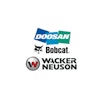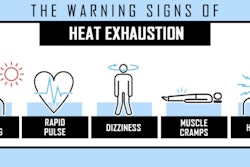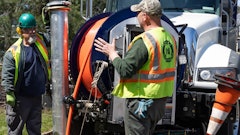
True total cost of ownership (TCO) is determined by factoring in everything that goes into operating a machine over its lifetime: initial purchase price, fuel costs, maintenance costs, utilization, organizational overhead, resale value, etc.
When you talk about total cost of ownership for rental companies, it has to play into their rental rate calculation as well as the return on investment, or return on asset, more so than just the purchase price of the machine. So if one brand has an advantage - and it might be something as simple as Brand A's oil change interval is 500 hours, while Brand B’s is 2,000 hours - and you start extrapolating that over the duration of ownership, it can start to add up. Specifically for the rental side, all of those costs have to roll up into a profitable rental rate. Then you look at taxes and depreciation and retail value, auction value and more.
Managing service intervals
One of the struggles rental companies face is that different manufacturers have varying service intervals. So if Brand A skid steer has a 500-hour service interval, Brand B has 215, and Brand C has 700 hours, it can be very difficult for a rental company to keep track of everything. As a result, some rental companies will simply standardize their approach to service, as in "All skid steers serviced at 500 hours," or even, "All machines 500 hours." When they do this, they're missing key cost savings by not taking advantage of some of the features certain manufacturers offer.
Take advantage of telematics
Telematics technology has made scheduling service intervals easier than ever. Eliminating the need for whiteboards and logbooks, telematics data can show rental companies where machines are in their maintenance schedule and how many hours are on the engine with up-to-the-minute accuracy. Telematics systems are also capable of sending alerts when a machine approaches a maintenance milestone, or is operating outside of an acceptable parameter.
Knowing exactly when a machine needs to be serviced allows service personnel to better plan for maintenance activities and ensure that all the proper parts, filters and components are in stock. Over time, sticking with the manufacturer-recommended service intervals will help maximize a machine’s profitability.
Calculations made easy
CASE recently introduced its Total Cost of Ownership Calculator that allows equipment owners and prospective buyers to get a realistic picture of the lifetime costs of a particular machine. The math is all done in the background, taking into consideration things like estimated time of ownership, estimated hours per year, cost of fuel, length of depreciation and so on. It then gives the user an anticipated total hourly cost for the life of that machine, which can help rental companies set rental rates that will maximize a machine’s profitability.
More and more manufacturers are offering tools like this. Remember to ask your suppliers about it.
The calculation itself can go pretty deep. Depending on the type of equipment, the calculator starts with owning costs, which include the initial purchase amount, interest, taxes, extended warranty and resale value. Also included are operating expenses, which include the cost of fuel, DEF, oil, tracks, bucket teeth and other consumables. Next is routine maintenance costs, which cover estimated labor rates as well as working conditions and utilization. Finally, the user ends up with a total owning and operating cost summary, which provides a total hourly cost for the machine.
Larger rental houses typically have their own systems for calculating total cost of ownership, but smaller rental companies sometimes need help, and they can often get it from their suppliers. Before that's done, it's important to take an especially close look at things like service intervals between manufacturers. If a rental company is changing the oil every 500 hours when the manufacturer says it's only needed every 2,000 hours, they're missing the opportunity to save thousands of dollars per year.
Equipment rental is a very competitive industry. Whatever their size, all rental companies need an edge, and having a clear picture of the hourly cost of a machine over the course of its lifetime is a surefire way to set the most profitable and competitive rental rates.





















